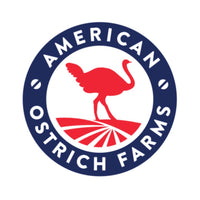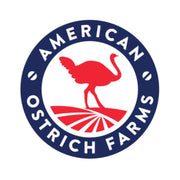April 4, 2016
Alexander McCoy was working as a financial adviser for Citigroup in South Africa when he first encountered ostrich meat.
McCoy was fascinated with the taste of the red meat, which is leaner than pork and beef, and was impressed with its ubiquity in South Africa. Large ostrich farms can hatch more than a thousand birds a year, and ostrich is as common in South African grocery stores as chicken is in U.S. groceries, McCoy said.
“It’s really similar in taste to beef and most people wouldn’t be able to tell the difference except for it is a little sweeter,” McCoy said.
When McCoy returned to the States in 2013, he decided to teach himself ostrich ranching. Three years later, he runs one of the largest ostrich operations in the country. He hopes to hatch hundreds of the long-legged flightless birds this spring. A female ostrich can lay 50 to 100 eggs in a six- month breeding period. Ostriches have a lifespan of 80 years and can breed for 40.
“It really is the last industry where if you hear the term exponential growth, it is being used correctly,” McCoy said.
McCoy is far from the first person in the U.S. to raise ostriches for meat. Ranchers even have a trade industry, the American Ostrich Association, founded in 1988 and based in Scurry, Texas. But it’s not easy, said McCoy and other ostrich ranchers. Incubation is tricky, and ostrich prices rose to an apex in the 1990s before collapsing.
“People don’t know what they are getting into sometimes when they buy ostriches,” McCoy said.
McCoy and his wife Lauren McCoy moved to the Boise area in 2013 to launch American Ostrich Farms and slowly collected ostriches from small farms seeking to leave the industry. A large number of their birds came from the only other large ostrich ranch in Idaho, the 10-year-old Golden Egg in Wendell, which closed its doors in February.
“We had a couple good years, but we always had problems hatching,” said Tiffany Finely, owner of the Golden Egg. “It is a delicate balance.”
McCoy and Finely said hatching is the hardest part of raising ostriches. McCoy has 175 ostriches and is hoping to multiply that number by four this year. He lost half of his eggs last year.
“I got bad advice last year and the CO2 levels in the incubators got too high last year – the eggs couldn’t breathe,” McCoy said. “I went and did a lot of research and we should see that number come up this year. We should have hatch rates above 75 percent.”
There are only about 10 ranches in the United States with more than 50 ostriches and only three or four with several hundred, McCoy said.
McCoy has been able to consult with some of the bigger ranches around the country through the ostrich association, but without many local resources he has had to teach himself a lot of what it takes to run an ostrich ranch.
“There isn’t someone here to teach you,” McCoy said. “There isn’t anyone here to say when to help a bird hatch or when to let them do it alone. You have to feel your way through it and read everything you can.”
An ostrich will stop laying eggs in the wild after several days when it has enough eggs to fill a nest. McCoy and his ranch manager Kelly Byington collect ostrich eggs from their 25 breeding pens every afternoon during breeding season. This tricks the ostrich into continuing to lay eggs.
“It’s strange because an ostrich isn’t too protective of her eggs until she sits down to incubate them,” McCoy said. “They don’t have the biggest brains, so they just keep laying eggs to fill up a nest if you keep collecting them.”
One ostrich egg is equivalent to about two dozen chicken eggs. The crew shared one for Easter.
“I have this 18-inch skillet I bring and with that I can make 13 breakfast burritos from one egg,” Byington said.
It takes an ostrich 12 months to grow to butchering weight, and even longer to reach sexual maturity. Female ostriches can become breeders in two years; male ostriches take three years. The long wait for sexual maturity is another barrier for new ostrich ranchers. McCoy has operated his ranch, near Kuna, in the red for three years.
“Any time you start slaughtering you arrest future growth,” McCoy said. “We had careers long before this and have been saving, but it is nerve-racking.”
The ranch slaughtered three ostriches for meat last year and made a large number of pre-sales during a Kickstarter campaign for products that will come from a slaughter in October, but most birds will be kept until next year.
“We’re holding half of this year’s hatch back to become breeders and then we will have over 1,000 birds next year,” said McCoy, who expects to use 120 acres. “If we wanted to stop holding birds back and get profitable we could, but obviously that wouldn’t help us long-term. We are delaying at least one more year to maximize growth.”
American Ostrich Farms has three employees and is looking for one more to help with ranch operations. Next year, it will hire a sales team to help get products into local butcher shops, grocery stores and restaurants.
The USDA included ostrich meat in its agricultural census in 2002, according to the national association. Though it’s rare to see ostrich meat on restaurant menus, the association is working hard to get the meat into the mainstream.
“The old chapter is closed,” the association says on its website. “The days of the unrealistic breeder market is gone and ostriches have developed into an alternative agricultural commodity.”
Along with meat, American Ostrich Farms will sell lotions and oils made from ostrich fat, leather products, and dog treats made of tendon and bones. Each ostrich is worth about $1,500 to the farm.
“I think there are lots of things you can learn from other cultures that if brought here can do really well,” McCoy said.
SUSTAINABLE RANCHING
The U.S. Department of Agriculture says ostrich ranching is more sustainable than cattle ranching. Cows need 8.7 pounds of feed and 30,800 gallons of water for every pound of beef cultivated, while ostriches need 3.8 pounds of feed and 9,000 gallons of water for every pound of meat.
McCoy is looking for ways to bring that number down more. He feeds his ostriches a mix of barley and other grains, but he plans to reduce his feed costs by 75 percent with a hydroponic chamber he is building with his father Brian McCoy. The two men have rigged a large insulated storage unit with shelves, water misters and UV lights and will use the chamber to sprout the barley seeds he buys from Simplot. Faucets mist for 20 seconds every hour, and within six days the seeds sprout, increasing the food volume significantly. One pound of seed equals 7 pounds of sprouted seeds, and McCoy said the chamber uses 100 times less water than it would take to grow the same amount of food on land.
“Sustainability is our motto here,” he said.
The CO2 that the ostrich egg incubators divert away from the eggs on the property will be directed into the chamber. McCoy and his father plan to sell the unit to other ranchers once they have a design they are happy with. The chamber will cost between $40,000 and $45,000.
“We’re excited about it,” Brian McCoy said. “We went around to 10 or 15 companies that had something like this for their animals in order to design this.”
OSTRICHES IN IDAHO
Ostriches are resilient creatures. Though McCoy said he wouldn’t recommend keeping the birds outside of the Treasure Valley’s relatively temperate climate, ranchers have kept birds in other parts of the state.
Adult ostriches can survive in the snow if they are kept dry. McCoy built covered shelters for each of his pens.
“They can keep themselves warm in the snow,” McCoy said. “What you have to worry about is ice. They aren’t good at walking on it and can slip and hurt themselves.”
McCoy has built greenhouses for young birds in the winter. And he keeps ostrich eggs in a temperature-controlled incubator on the ranch.
“Every stage of the ostrich life cycles has its own needs,” McCoy said. “They need more room as they grow and the breeders need an even bigger pen for them to mate naturally.”
This article was originally published by the Idaho Business Review.









